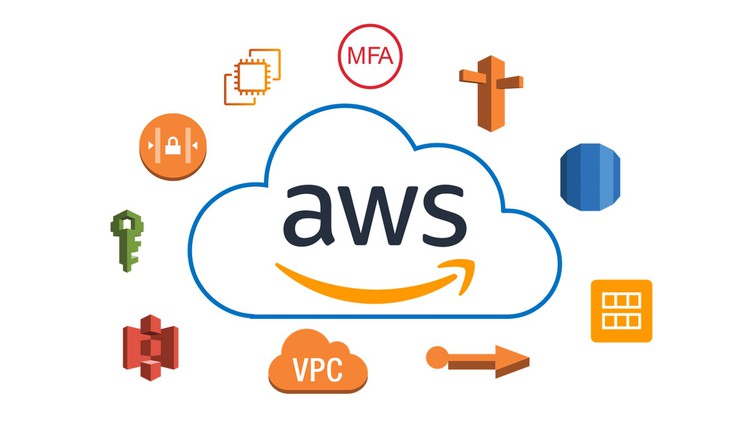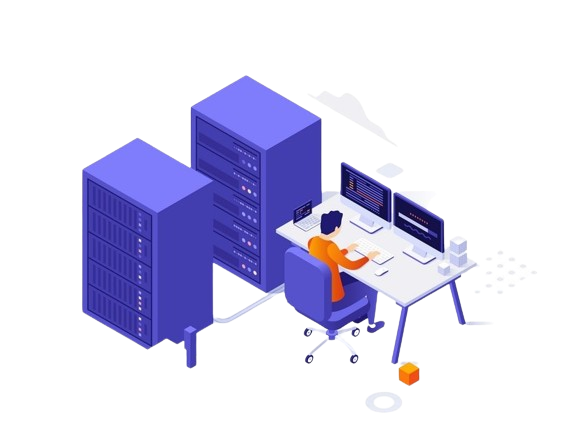
IT Infrastructure Services
IT Infrastructure Services are designed to help businesses effectively manage IT environments System and Networks, ensure reliability and security, and support their overall business objectives. IT infrastructure services include: Hardware, software, networks and other resource and management of data and information. Services include
- 24×7 Monitoring
- Level 1 to Level 2 Support
- Troubleshooting and Optimization
- IT System or Server Management : Windows and Linux servers, VM ware and VM , Cloud infrastructure
- Network Infrastructure Management (Router, Switch, WAN, VLAN, LAN, Firewall)
- Oracle /SQL databases , Development custom application and more.
24x7 Monitoring
Real Time Continuously monitoring the Network performance and health of IT systems Server Performance and networks to identify issues, bottlenecks, and opportunities for optimization. This may involve using monitoring tools, performance metrics, and analytics to proactively address potential problems and improve system efficiency. and ensuring
24/7 Available
All time available


Troubleshooting
IT troubleshooting is the process of identifying, diagnosing, and resolving technical issues or problems that arise within an organization’s IT systems, networks, or device like Servers IT System or Server Management : Windows and Linux servers, VM ware and VM , VM , Network devices etworks (LANs), wide area networks (WANs), internet connectivity, wireless networks, and networking protocols., Router , Switches ..
Gather Information ,Identify the Scope, Isolate the Cause, Troubleshoot Methodically, Implement Solutions, Verify Resolution and Monitor for Recurrence
Optimization
IT optimization involves the process of enhancing the efficiency, performance, and effectiveness of an organization’s information technology (IT) systems, infrastructure, and processes to better support business objectives and maximize value. It encompasses various strategies and initiatives aimed at improving the utilization of IT resources, reducing costs, increasing productivity, and enhancing the overall quality of IT services
Level 1 to Level 2 IT Support
Level 1 to Level 3 IT support refers to a tiered system of technical support to efficiently address and resolve IT issues. Each level corresponds to a different level of expertise and complexity of problems handled.
Level 1 Support
Level 1 Support (Tier 1):
- Role: Level 1 support is the first point of contact for end-users who encounter IT-related issues or require assistance with basic technical tasks.
- Responsibilities:
- Providing initial triage and assessment of incoming support requests.
- Resolving routine and straightforward issues using predefined procedures and knowledge bases.
- Assisting with basic user account management, password resets, and software installations.
- Escalating more complex issues to higher support tiers as needed.
- Skillset: Level 1 support technicians typically have basic technical knowledge and troubleshooting skills. They may require training in specific tools or software used within the organization.

Level 2 Support (Tier 2):
- Level 2 support handles more complex technical issues that cannot be resolved at the Level 1 stage. They provide escalated support beyond basic troubleshooting.
- Responsibilities:
- Investigating and diagnosing technical problems that require deeper analysis and expertise.
- Providing advanced troubleshooting and problem-solving assistance for hardware, software, and network issues.
- Resolving issues that require access to more specialized knowledge or resources.
- Collaborating with Level 3 support or other IT teams to resolve complex issues.
- Skillset: Level 2 support technicians possess more advanced technical skills and knowledge compared to Level 1. They may have expertise in specific technologies, platforms, or applications used within the organization.
Level 3 Support (Tier 3): (Based on case )
Level 3 Support (Tier 3):
- Level 3 support is the highest level of technical support offer by infovaly , responsible for handling the most complex and critical IT issues.
- Responsibilities:
- Providing specialized expertise and in-depth analysis to resolve intricate technical problems.
- Investigating root causes of recurring issues and implementing long-term solutions to prevent future occurrences.
- Performing advanced configuration, customization, and optimization of IT systems and infrastructure.
- Collaborating with vendors, developers, or other external resources to resolve highly specialized issues.
- Skillset: Level 3 support technicians possess extensive technical knowledge and experience in multiple IT domains. They often have expertise in specific technologies, architectures, or industry best practices and may hold advanced certifications or qualifications.

IT Infrastructure Services Area
Hardware
IT system Hardware
Software & system integrations
Applicaitons
Network
Ensure network connectivity
Database ,Backup and Recovery
Database Maintenace ,Backup and Recovery are the key components of business continuity
Cloud and Network Security
Protect applications, network, data, and infrastructure. Cloud security
Customer Software development
Develop on demand software

Cloud Infrastructure Services
The example of Cloud based application are
Microsoft 365, Outlook, OneDrive, Dropbox, Google Drive, share points Netflix, Facebook, LinkedIn, Instagram, MS teams, share points
And it works with a subscription basis. As a Managed Cloud service provider, Infovaly serves to client the cloud application support to manage Cloud application services.
Infovaly assist clients in their usage, administration, and management of IT services available from or through Public Cloud providers
Network Infrastructure Service
Network infrastructure services encompass the planning, design, implementation, management, and optimization of the networking components that facilitate communication and data exchange within an organization’s IT environment including Software-Defined Networking (SDN) and Network Function Virtualization (NFV)
Network Design and Architecture ,Network Implementation and Deployment,Network Security, Network Monitoring and Management,
Network Optimization and Performance Tuning: Network optimization services focus on optimizing network performance, reliability, and scalability to meet the growing demands of the organization. This includes analyzing network traffic, identifying performance bottlenecks, and implementing optimization strategies such as quality of service (QoS), traffic shaping, and bandwidth management to improve the user experience and optimize resource utilization.


